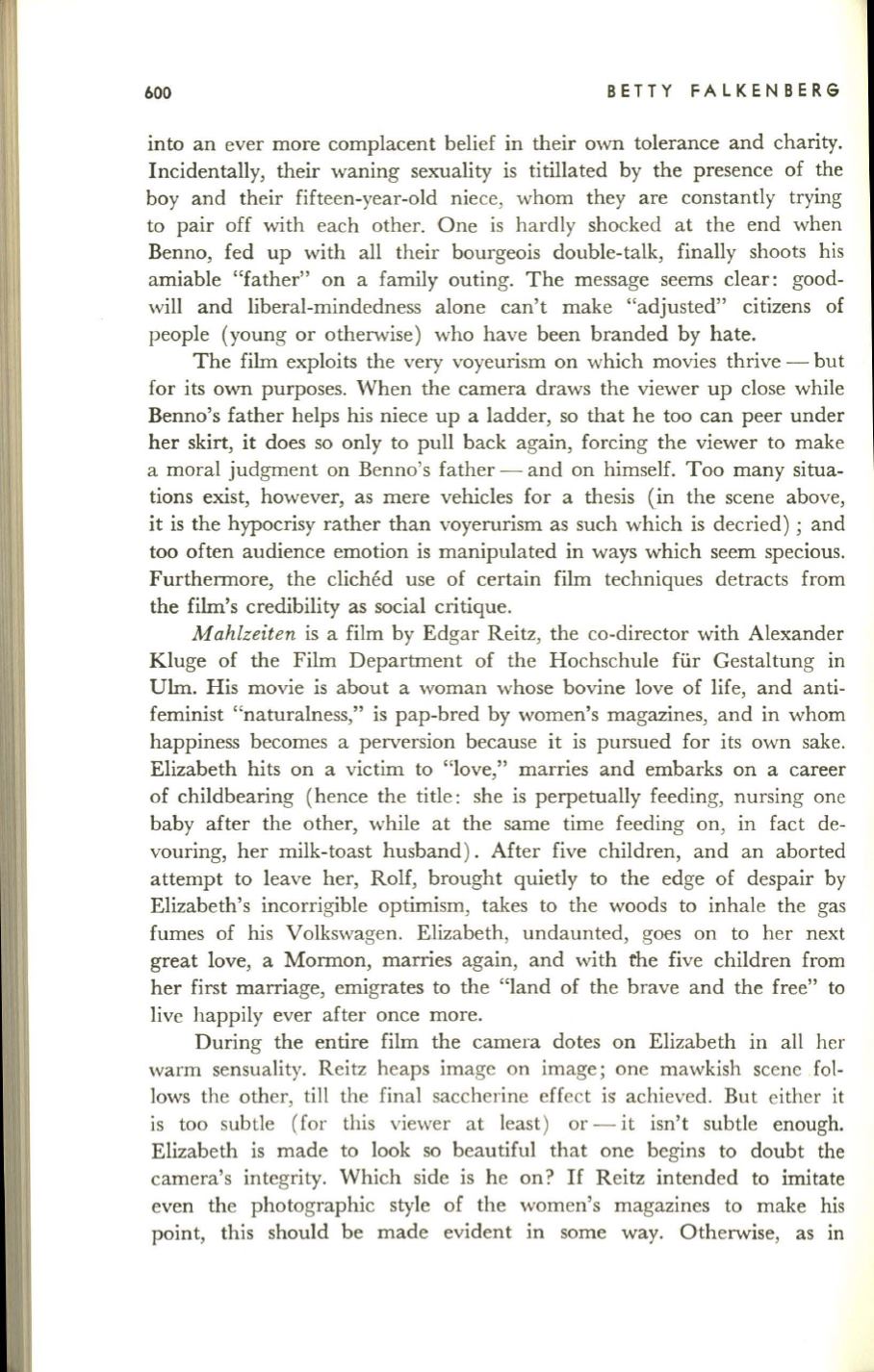
600
BETTY FALKENBERG
into an ever more complacent belief in their own tolerance and charity.
Incidentally, their waning sexuality is titillated by the presence of the
boy and their fifteen-year-old niece, whom they are constantly trying
to pair off with each other. One is hardly shocked at the end when
Benno, fed up with all their bourgeois double-talk, finally shoots his
amiable "father" on a family outing. The message seems clear: good–
will and liberal-mindedness alone can't make "adjusted" citizens of
people (young or otherwise) who have been branded by hate.
The film exploits the very voyeurism on which movies thrive - but
for its own purposes. When the camera draws the viewer up close while
Benno's father helps his niece up a ladder, so that he too can peer under
her skirt, it does so only to pull back again, forcing the viewer to make
a moral judgment on Benno's father - and on himself. Too many situa–
tions exist, however, as mere vehicles for a thesis (in the scene above,
it is the hypocrisy rather than voyerurism as such which is decried) ; and
too often audience emotion is manipulated in ways which seem specious.
Furthermore, the cliched use of certain film techniques detracts from
the fiIm's credibility as social critique.
Mahlzeiten
is a film by Edgar Reitz, the co-director with Alexander
Kluge of the Film Department of the Hochschule fur Gestaltung in
VIm.
His movie is about a woman whose bovine love of life, and anti–
feminist "naturalness," is pap-bred by women's magazines, and in whom
happiness becomes a perversion because it is pursued for its own sake.
Elizabeth hits on a victim to "love," marries and embarks on a career
of childbearing (hence the title: she is perpetually feeding, nursing one
baby after the other, while at the same time feeding on, in fact de–
vouring, her milk-toast husband ). After five children, and an aborted
attempt to leave her, Rolf, brought quietly to the edge of despair by
Elizabeth's incorrigible optimism, takes to the woods to inhale the gas
fumes of his Volkswagen. Elizabeth, undaunted, goes on to her next
great love, a Mormon, marries again, and with the five children from
her first marriage, emigrates to the "land of the brave and the free" to
live happily ever after once more.
During the entire film the camera dotes on Elizabeth in all her
warm sensuality. Reitz heaps image on image; one mawkish scene fol–
lows the other, till the final saccherine effect is achieved. But either it
is too subtle (for this viewer at least ) or - it isn't subtle enough.
Elizabeth is made to look so beautiful that one begins to doubt the
camera's integrity. Which side is he on?
If
Reitz intended to imitate
even the photographic style of the women's magazines to make his
point, this should be made evident in some way. Otherwise, as in


